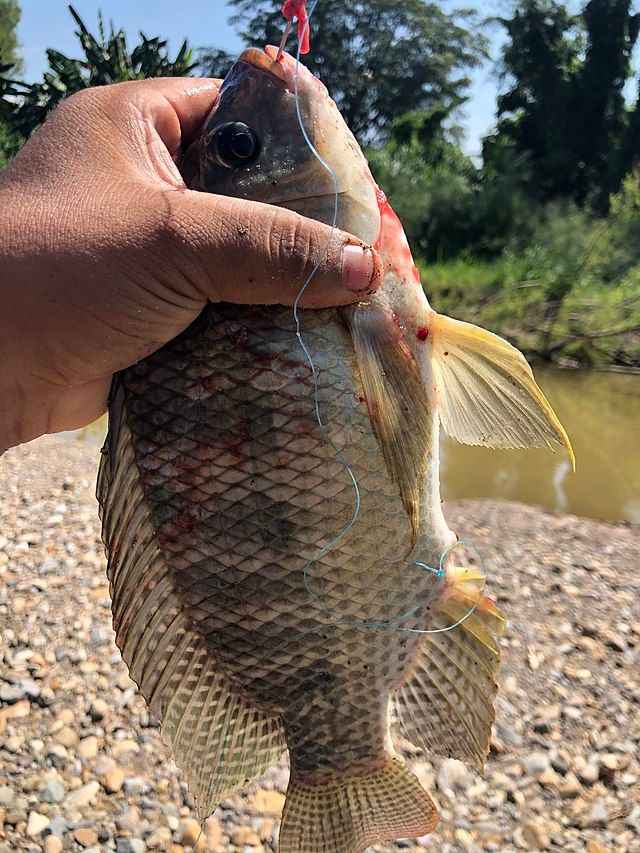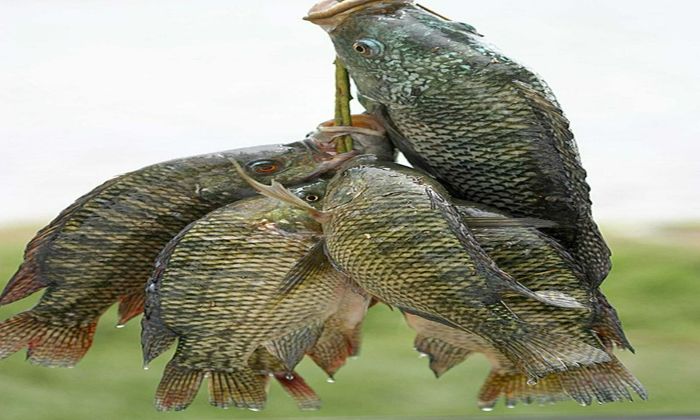Pro Tips for Catching Tilapia
Anglers consider catching tilapia as tricky and challenging but fun. Here are some pro tips for catching tilapia.

Tilapia is a common name used for certain fish belonging to the family Cichlidae. They are also known as Saint Peter's fish, originating from an excerpt of the Gospel of St. Matthew. The apostle Peter would find a fish, believed to be a tilapia, holding a coin in its mouth that he intended to use to pay the temple tax. Tilapia have laterally compressed, deep bodies and their lower pharyngeal bones are combined into a single tooth-bearing structure like other cichlids. Tilapia can capture and process various food. Their mouths are protrusible, usually bordered with wide and often puffy lips and their jaws have cone-shaped teeth. It has a long dorsal fin and a lateral line that usually splits at the dorsal fin and starts again two or three rows of scales below. Tilapia species vary in shape, size, and color. Three of the most commonly caught and eaten tilapia species are the Nile, Blue, and Mozambique. They are different from one another in various ways.

Tilapia are native to Africa and the Middle East but are now farmed in an estimated 135 countries worldwide, including the United States. They are freshwater fish that settle in shallow streams, ponds, rivers, and lakes. They can easily be raised and harvested. Their diet consists of algae and other water plants. The most suitable time to fish for tilapia is during their spawning season. While they spawn throughout the year, the peak of the spawning appears to be during the spring and fall seasons. Tilapia is an ideal fish for farming. It is the fourth-most consumed fish in the United States due to its low price, easy preparation, and mild taste.
Aside from being farmed, tilapia are ecological agents and serve as a natural, biological control for most marine plant problems. One of the famous tilapia species, the Nile tilapia, has been used for medical purposes. Its skin is applied as a bandage and used in a new clinical trial to treat burn injuries.

Pro Tips for Catching Tilapia
Catching tilapia is considered challenging but also enjoyable by anglers. Before you cast your line, it is critical to understand the behavior of the fish you are attempting to catch. Given that tilapia are a shy type of fish that can be easily frightened, the following are some pointers to help anglers on their next tilapia catching trip.
1. Use the Proper Bait
Tilapia devours on plant-based foods and are known to be herbivores, so expensive live baits such as minnows and nightcrawlers are no longer needed. Type of baits, like corn, peas, and bread balls, can effectively entice a hungry tilapia. Anglers can also use tilapia’s natural territorial intuitions to help increase their possibilities of a successful catch. Some anglers assert that they have successfully captured tilapia using earthworms as baits. Meanwhile, artificial baits that mimic small fish can also lure the fish. They can be thrown into the water near a tilapia spawning pool. Tilapia are naturally territorial, and they will most likely attack the lure. Because tilapia has a delicate bite, it is important to use smaller hooks and shorter lures. Anglers must learn how to hook baits because it is a crucial skill for catching any fish properly.
2. Using the Right Tackle
When targeting a tilapia, always remember that not all lures will effectively attract the fish. Tilapia are relatively small fish compared to others, and they are also shy type; thus, light tackle and a smaller-sized bait are a must to catch them. It is advised to use a long pole, lightweight, with a spinning reel. Anglers commonly use a 4-to-8 pound test line rigged on a small spinning reel with small #4 or #6 size hooks. Anglers can also use small floats to suspend bait over the spawning pools of tilapia.
3. Find the Perfect Fishing Spot
It is essential to know the habitat of tilapia before casting your line; they are found in shallow, brackish waters. They live in shallow streams, ponds, rivers, and lakes to protect them from other species and predators. Tilapia are territorial, so anglers need to be extra careful when approaching these areas. States such as Florida and Texas are the most suitable places to fish for tilapia since they have 33 and 44 regions, respectively, where tilapia are observed. Alabama is another state known for tilapia fishing.
4. Target Tilapia During Their Spawning Season
Tilapia spawn during spring or fall when the water temperatures drop to below 60 degrees Fahrenheit. They are likely to move to very shallow water during their spawning period, making it their particular spawning pool. At the time of their breeding period, tilapia become highly territorial and attack anything that comes in the way of their spawning pools. But do remember that tilapia are easily spooked, and once frightened, anglers can bid farewell to any chances of capturing them. Keeping a minimum distance from spawning pools and fishing along the shoreline will have better results. It is possible to catch tilapia at any time of day, but the best time to do so is before sunrise.
5. Use the Right Posture
Anglers for tilapia typically control the rod horizontally and vertically. It can be effective, but it may not be the best way to hook a tilapia. It is more effective to hold the rod in a downward direction. Fishing for tilapia requires a lot of sitting and standing. Using a fishing chair can spare anglers from fatigue, but investing some time in understanding the ideal posture for standing is the best technique.

6. Get A Fishing Permit or License
Anglers are reminded to obtain any fishing permit or license before casting their line. Be aware of any local laws prohibiting tilapia fishing in the areas you intend to fish. Aside from that, checking the weather and water situations is a must for a successful fishing trip.



